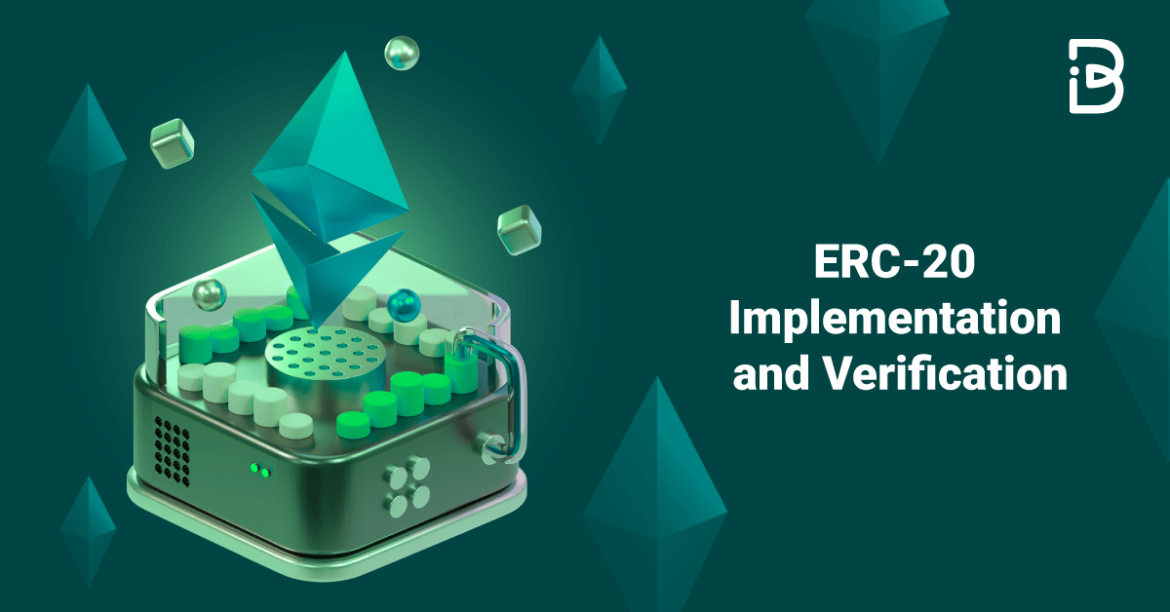Introduction
The modern financial landscape now includes cryptocurrencies as a fundamental component. They have made it possible for consumers to transact fast and securely without upsetting established payment systems. ERC-20 is one such cryptocurrency standard that has grown in popularity among developers for the creation of new tokens. We will go over what ERC-20 is, how to use it, and how to validate it in this blog.
What is ERC-20?
ERC-20 is a technical standard used for creating and managing tokens on the Ethereum blockchain. ERC-20 tokens are fungible, which means that each token is interchangeable and has the same value as every other token. This makes them ideal for creating currencies, reward points, and other digital assets.
ERC-20 was introduced in 2015 and has become one of the most popular token standards on the Ethereum blockchain. It has been used to create thousands of tokens, including some of the most well-known cryptocurrencies, such as Chainlink, Binance Coin, and Tether.
Example functionalities ERC-20 provides:
- transfer tokens from one account to another
- get the current token balance of an account
- get the total supply of the token available on the network
- approve whether an amount of token from an account can be spent by a third-party account
If a Smart Contract implements the following methods and events, it can be called an ERC-20 Token Contract and once deployed, it will be responsible for keeping track of the created tokens on Ethereum.
Implementing ERC-20
Implementing ERC-20 is a straightforward process, and anyone with basic knowledge of programming and the Ethereum blockchain can create a new token. Here are the steps to follow:
- Set up a development environment: To develop and test your ERC-20 token, you will need to set up a development environment. You can use tools like Remix or Truffle to do this.
- Define the smart contract: The ERC-20 standard defines a set of functions that a token smart contract must implement. These functions include balanceOf, transfer, approve, and others. You can find the full list of functions in the ERC-20 standard.
- Write the smart contract code: Once you have defined the functions your smart contract needs to implement, you can start writing the code. You can use Solidity, a programming language specifically designed for writing smart contracts on the Ethereum blockchain.
- Test the smart contract: After writing the code, you need to test the smart contract to ensure it works as expected. You can do this by using a testnet like Ropsten or Kovan, which allows you to test your smart contract without spending real ether.
Verifying ERC-20
Verifying your ERC-20 token is an essential step in ensuring its integrity and security. Verifying your token on Etherscan, a popular blockchain explorer, allows other users to confirm that your token is legitimate and has not been tampered with. Here are the steps to follow:
- Compile the smart contract code: Before verifying your smart contract, you need to compile the code using a compiler like Remix or Truffle.
- Deploy the smart contract: Once you have compiled the code, you need to deploy the smart contract on the Ethereum blockchain. You can do this using a tool like MyEtherWallet or MetaMask.
- Verify the smart contract on Etherscan: After deploying the smart contract, you can verify it on Etherscan. To do this, go to the “Contract” tab on Etherscan, enter the contract address, and click “Verify Contract.”
- Provide the contract source code and compiler version: When verifying your contract, you need to provide the contract source code and the compiler version used to compile the code.
- Confirm the verification: After providing the necessary information, Etherscan will confirm the verification of your ERC-20 token.
Conclusion
ERC-20 is a widely used standard for creating and managing tokens on the Ethereum blockchain. It has become popular due to its fungibility, allowing for easy interchangeability and equal value of each token.
The implementation of ERC-20 is a straightforward process, and anyone with basic knowledge of programming and the Ethereum blockchain can create a new token. By defining the functions required by the ERC-20 standard, writing the code, and testing the smart contract, a new token can be created and deployed on the Ethereum network.
Verifying an ERC-20 token is an essential step in ensuring its security and integrity. Verifying the smart contract on a popular blockchain explorer like Etherscan allows other users to confirm the legitimacy of the token and that it has not been tampered with.
By following the necessary steps, providing the source code and compiler version, and confirming the verification, a new ERC-20 token can be verified on the Ethereum blockchain.
Overall, ERC-20 tokens have opened up new opportunities for creating digital assets, currencies, and rewards programs that operate on the Ethereum blockchain. The ease of implementation and verification has made it possible for developers and entrepreneurs to create their own tokens and innovate in the rapidly evolving world of blockchain technology. As the use cases for ERC-20 tokens continue to expand, we can expect to see even greater adoption and integration of this popular standard.

